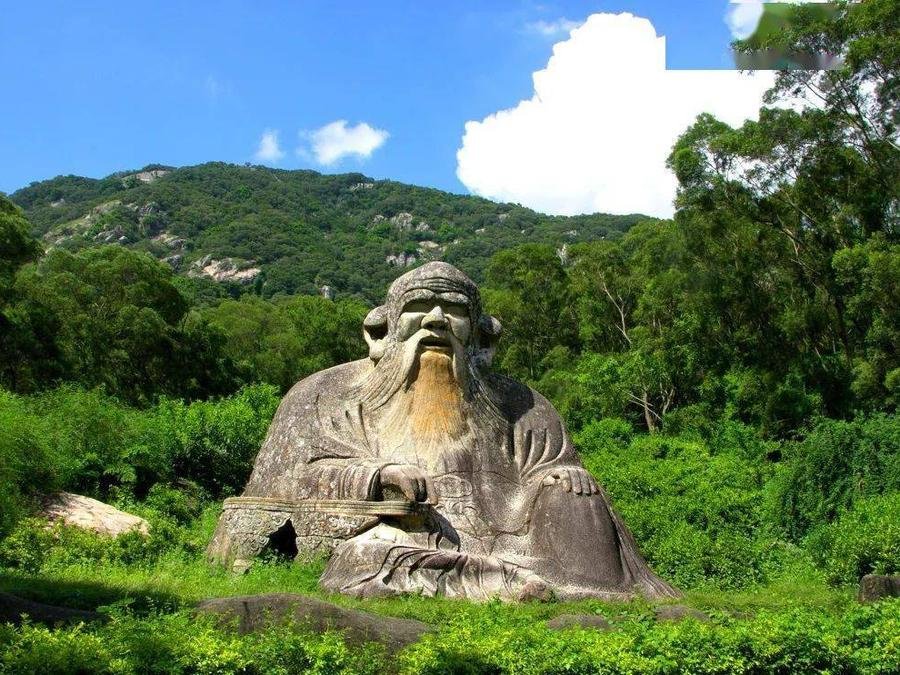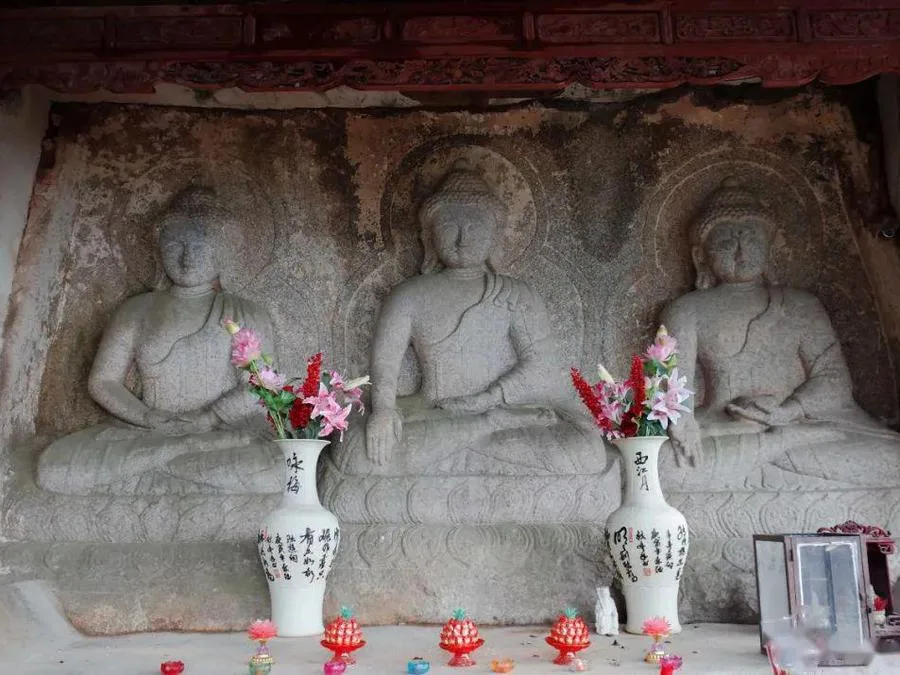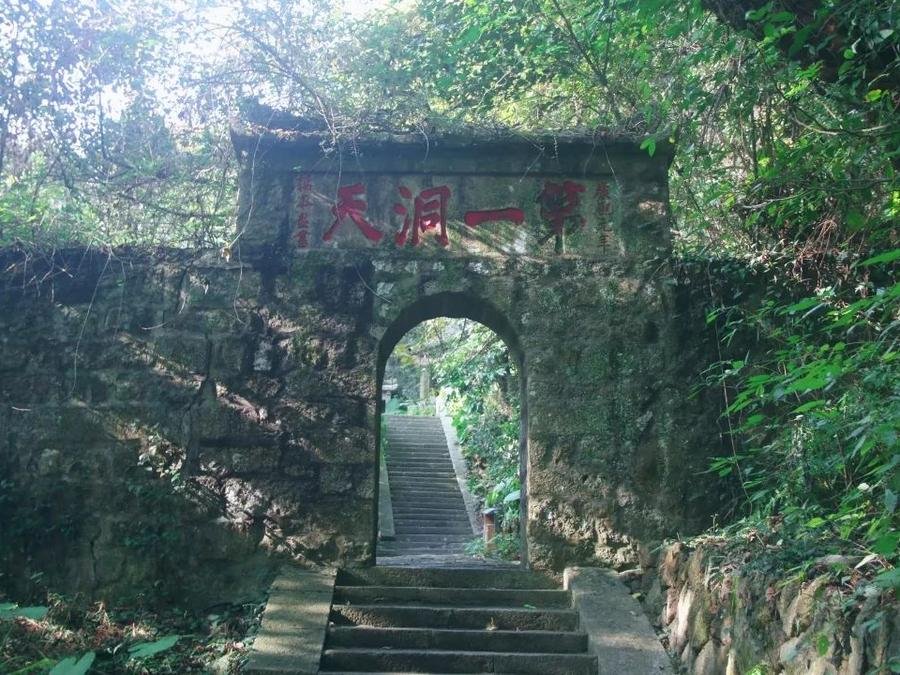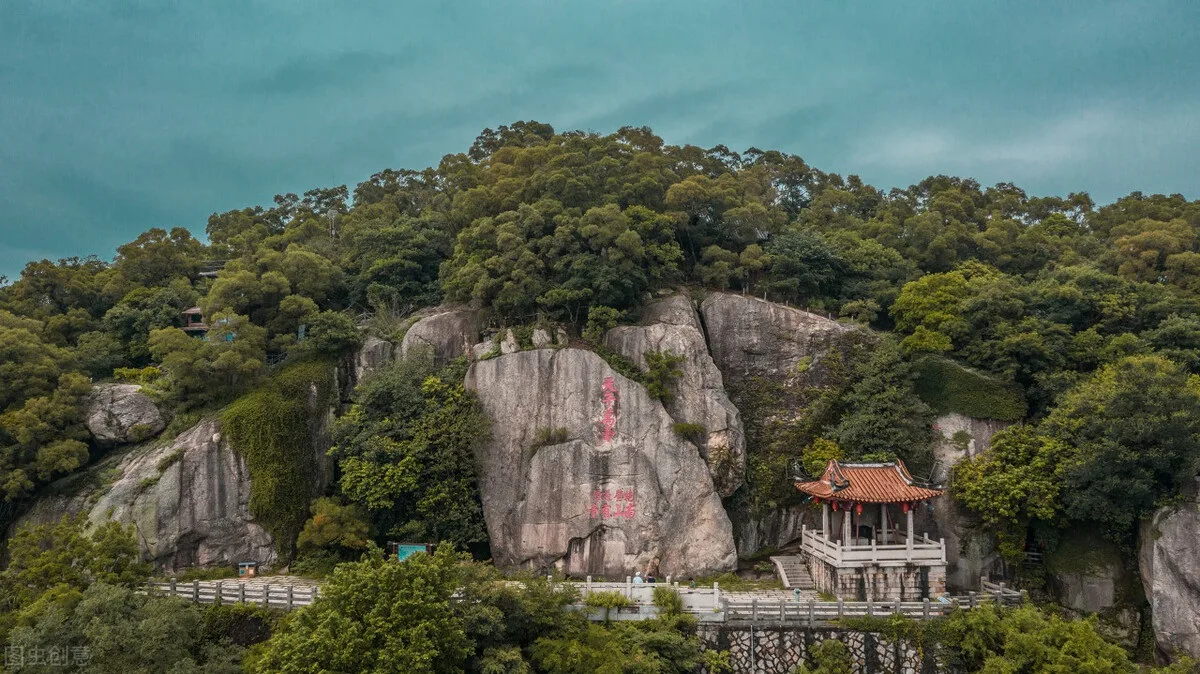Mount Qingyuan (清源山, Qingyuan Mountain), located on the outskirts of Quanzhou City in Fujian Province, China, borders the city on three sides. Its main peak reaches an elevation of 498 meters above sea level. Known for its numerous springs, it is often referred to as “Quanshan” (Spring Mountain) and “Qiyunshan” (Cloud-Entering Mountain) due to its lofty heights that seem to touch the clouds. Another notable feature is the Laojunyan (Old Master Rock) at the foot of the mountain, featuring a lifelike sculpture of Laozi, with a history dating back a millennium. This Taoist stone carving is the largest, most artistically refined, and oldest surviving in China.
Within the scenic area, there is also the Hongyi Master Pagoda, deeply rooted in Minnan culture, housing a mural painted with tears by the late Mr. Feng Zikai. In front of the pagoda, there are the poignant writings “Sorrow and Joy Intersect” left by the Master before his passing. Beyond exploring cultural landmarks and hiking, visitors can enjoy unique pleasures like tea drinking along the mountain trails or dining at the summit, adding to the experience of immersing in Minnan culture.
Table of Contents
- Basic Information
- Location and Transportation
- Map of Mount Qingyuan
- Highlights of Mount Qingyuan
- Vlog about Mount Qingyuan
- Attractions near Mount Qingyuan
Basic Information
| Estimated Length of Tour | Half a day |
| Ticket Price | 70 RMB |
| Opening Hours | 8.00 – 17.30 |
| Telephone Number | 0086-0595-22777675 |
Location and Transportation
Mount Qingyuan is situated in Quanzhou, Fujian Province, China, specifically in the Fengze District along Quanshan Road. It covers an area of approximately 62 square kilometers. To get there, you can take bus 15, 601, 603, 604, K203, or L1 and get off at Qingyuan Mountain Scenic Area Stop (清源山风景区站).
Map of Mount Qingyuan

Highlights of Mount Qingyuan
Laojun Statue (老君造像)

The Laojun Statue is a nationally protected cultural relic and a unique artistic treasure in Chinese Taoist stone carvings. According to historical records from the Qing Dynasty’s Qianlong period, the statue is described as a naturally formed giant rock resembling an old man, skillfully carved by local artisans into the likeness of Laozi, the founder of Taoism during the Spring and Autumn Period. Originally housed within a grand Taoist temple complex featuring structures like the Zhenjun Hall and Beidou Hall, the statue later stood exposed after the temple was destroyed by fire. The statue measures 5.63 meters in height, 6.85 meters in thickness, 8.01 meters in width, covering an area of 55 square meters, making it China’s largest existing Taoist stone carving, known for its exquisite craftsmanship and ancient origins.
Huru Spring (虎乳泉)

Located on a rocky slope above the Qingyuan Tianhu (Heavenly Lake), Huru Spring (Tiger Milk Spring) is named for its association with the mountain’s numerous springs. Adjacent to Huru Spring is the “孔泉” stone inscription. The spring flows from a crevice between upper and lower stones, filling a square stone hole. Inscriptions by Lü Dao-ren titled “虎乳” and by Song Dynasty scholar Zhu Xi describing “源头活水 (Source of Living Water)” adorn the site. Huru Spring flows year-round, and visitors can hear the sound of flowing water echoing from beneath the rocks, adding to its mystical allure.
Maitreya Rock (弥陀岩)

Maitreya Rock, constructed in the 24th year of Emperor Shun of the Yuan Dynasty (1364 AD), is an architectural marvel and a testament to Yuan Dynasty Buddhist stone carving art. Inside the rock-cut chamber stands a majestic statue of Maitreya Buddha, carved directly into the natural cliff face. The statue measures 5.77 meters in height and 2.5 meters in width, depicting Maitreya Buddha with a serene and benevolent expression, adorned with a coiled topknot and standing on a lotus pedestal. The architectural features of the chamber and the attire of the Buddha provide valuable insights into Yuan Dynasty architecture and Buddhist stone carving art south of the Yangtze River. Above the chamber, along the steep cliffs, are stone inscriptions of Buddhist scriptures handwritten by Ma Fushu, the Fujian Land Route Inspector during the Qing and Qianlong periods, earning the title of “First Buddha of Minhai.” Additionally, the cliffside stone inscription of the characters “拜观” by the renowned Chinese painter and calligrapher Huang Zhou adds to the grandeur of the site.
Three Buddhas (三世佛)

The Three Buddhas are seated side by side on inverted lotus pedestals, each approximately 2.5 meters tall with the central Buddha slightly taller than the flanking Buddhas. These statues, in Tibetan style, depict the central Buddha Shakyamuni, symbolizing the present world; the left Buddha as Bhaisajyaguru, representing the past world; and the right Buddha as Maitreya, symbolizing the future world. The statues are well-preserved, showcasing intricate details such as coiled hair, shoulder-baring robes, and clearly defined sculptural lines despite the passage of time. According to records in the “Yuan Dynasty Painting and Sculpture Record,” these Three Buddhas were prominently worshipped in Tibetan-style temples in the Yuan Dynasty capital city, reflecting their significance as primary deities of the era’s Tibetan Buddhism. These stone carvings, dated back to 1292 AD, are considered the earliest, best-preserved, and southeastern-most examples of Tibetan-style Three Buddhas discovered in China, with a history spanning over seven centuries.
Qingyuan Cave (清源洞)

Qingyuan Cave, located at the peak of Mount Qingyuan, is the first among thirty-six caves and has been revered as a sacred site since the Southern Song Dynasty (1127-1279 AD). It featured architectural marvels such as the Guankong Tower, Buddha Hall, and the Pei Xian Shrine. Legend has it that during the Southern Song Dynasty, a Taoist named Pei chased a giant python, notorious for harming local inhabitants, into this cave. Pei sealed the entrance with stones and eventually transcended into immortality at the cave’s mouth, preventing the python from causing further harm. Hence, the cave earned the name “Pei Immotal Cave.” The cave’s original “Qianfeng Purple Pavilion” has since vanished, leaving behind historical stone inscriptions like “蜕岩 (Shedding Rock)” and “羽化登仙 (Transformation into Immortals),” which testify to its storied past.
Stupa of Master Hongyi (弘一法师舍利塔)

In 1952, the Hongyi Master’s Stupa was erected on the western side of Maitreya Rock within the scenic area of Mount Qingyuan. This stupa enshrines the relics of Master Hongyi and is constructed from the renowned Quanzhou white granite, meticulously carved to emulate the wooden structures typical of southern Fujian architecture. Inside the stupa, a spider-web-like vaulted ceiling enhances the spatial effect, while the front wall displays the “Portrait of Master Hongyi,” a poignant ink painting by Mr. Feng Zikai. Master Yongyi was revered for his profound knowledge in art, calligraphy, music, and Buddhist philosophy, earning him a place alongside Taixu and Yinguang as one of the three eminent monks of modern times. His artistic legacy is celebrated with numerous calligraphic masterpieces in Quanzhou, and the inscription “悲欣交集 (Intermingling Joy and Sorrow)” before the stupa represents his final testament.
Qingyuan Heavenly Lake (清源天湖)

In 1993, the municipal government decided to construct the Qingyuan Heavenly Lake reservoir project in the scenic area of Shanhai Daguan within Mount Qingyuan’s Zize Dongtian Valley, below the Tiger Milk Spring. The reservoir’s dam, situated at an altitude of 368 meters, features a double-curved stone arch structure with a height of 30 meters, a top length of 140 meters, and a width of 2.8 meters. It has a total capacity of 115,000 cubic meters and covers a maximum water surface area of 12,000 square meters. Construction began in October 1994 and was completed with the reservoir filled by June 1996.
Visitors to Qingyuan Tianhu can enjoy local farmhouse cuisine by the lake, which offers affordable and delicious options. As dusk falls, locals often gather on the mountain for barbecues, a cherished community tradition.





You can take a taxi directly to the top of Qingyuan Mountain at night, and the night view of Quanzhou City is quite impressive.
Qingyuan Mountain offers different sceneries in various seasons and along different routes. Currently, the rhododendrons are in full bloom.
I visited Baizhangping (百丈坪), Nantaiyan (南台岩), Shenkongdong (神龙洞), and Qingyuandong (清源洞). The fog at the mountain top was quite thick, so be cautious to avoid slipping. It was very serene and had a strong sense of Zen.
It’s important to wake up early when going out for fun. Climbing the mountain and taking pictures at 8 AM, there were basically no crowds. By the time we came down at 11 AM, it was already bustling with people. I’m always grateful that we arrived early.
I went there for the free admission ticket, but when I arrived at Laojun Rock, it was exactly 7:01 AM and they wouldn’t let me in. I had to pay for a ticket. After climbing to Nan Tai Rock and exploring it, I returned to Tianhu Lake and descended back to Laojun Rock. Unexpectedly, I took the wrong path and ended up on the steepest route.
This time, I climbed Nantai Rock entirely via stairs, totaling 2,400 steps, with no breaks until I reached the top. After that, I visited Qingyuan Cave and descended to Baizhangping and Heaven Lake, coming down by the ancient mountain path. It was a perfect loop!
The weather was quite nice today, so I drove up to Qingyuan Mountain. I drove straight to the summit, Nantaiyan, around two in the afternoon. The sun was shining beautifully, and the view from the top was magnificent—I could see West Lake and the Min-Tai border, and I could also spot Zimao Mountain. No wonder people refer to Qingyuan Mountain as the back garden of Quanzhou. After that, I went directly to the Heavenly Lake, where the goldfish were really… Read more »
You can drive directly to the top of the mountain, where there are plenty of parking lots. You can also take a trail up the mountain and then take a car down for 15 yuan per person, which is very convenient.